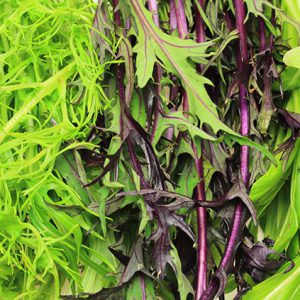Step 1 - Sowing
When to sow: Oriental greens can be sown all year long!
Where to sow: Sow direct in the soil or in module trays for later transplanting. While some salads can’t be grown in containers due to needing more room, oriental greens grow fantastically in containers.
How to sow: If sowing in module trays, sow about 5 seeds per module. Allow 25cm between rows and plants (with 5 plants at each station). If sowing directly into soil make shallow drills (about 1cm deep) – allow 25cm between drills. If sowing in containers fill with compost, sprinkle seeds lightly on the surface and cover with a thin layer of compost.
Sowing Tip: Keep the compost moist and put the tray somewhere warm and sunny.





